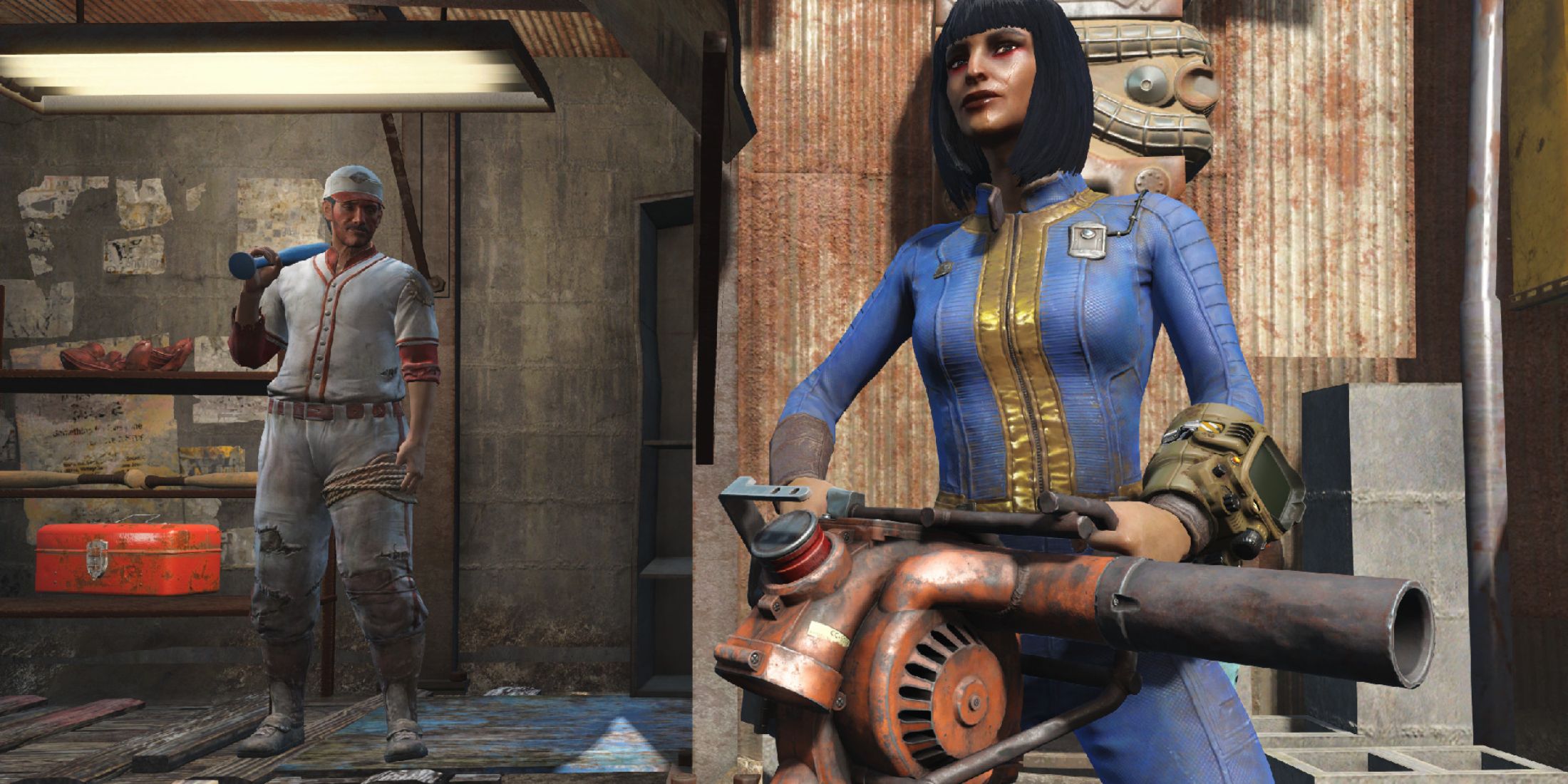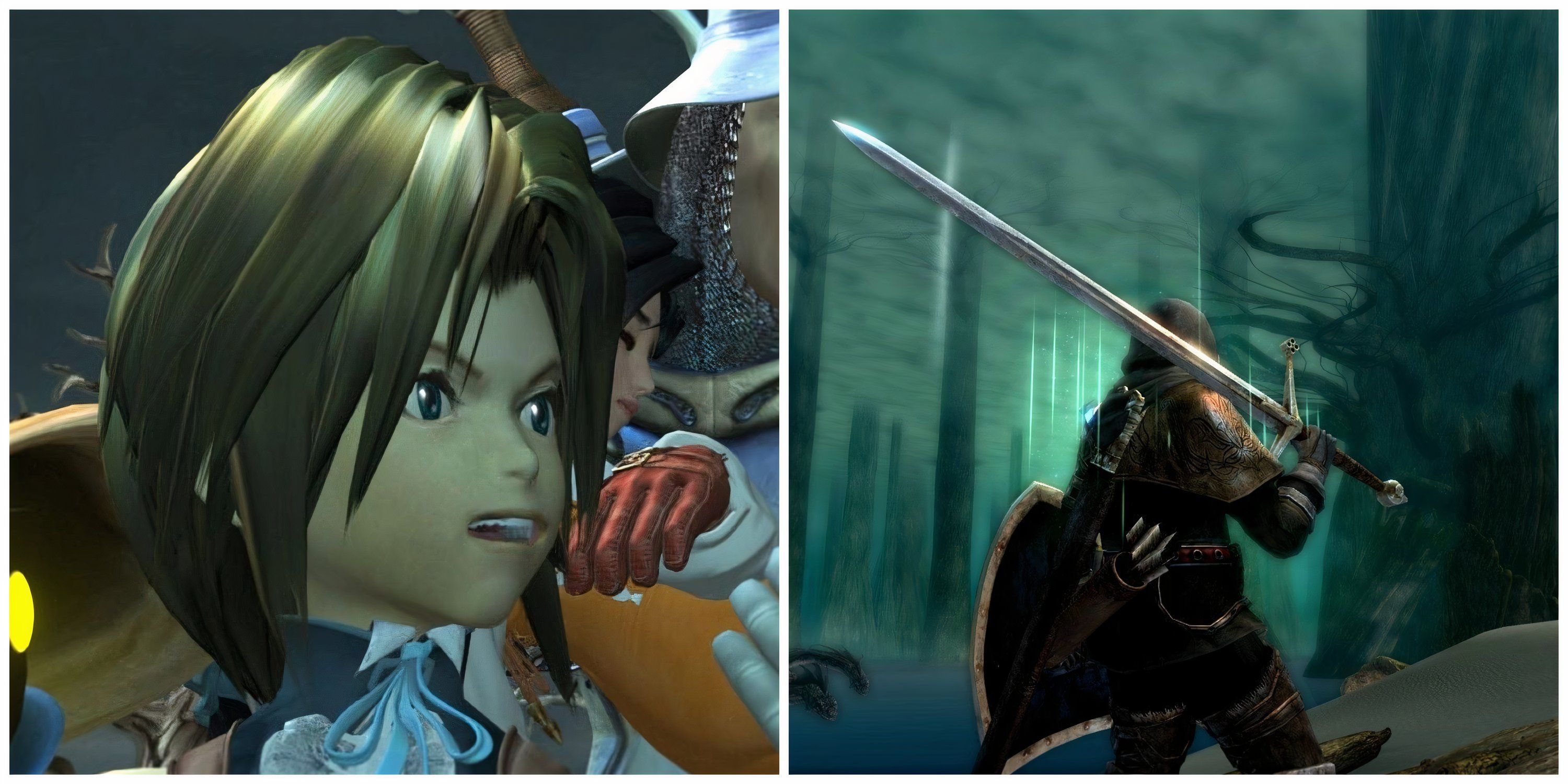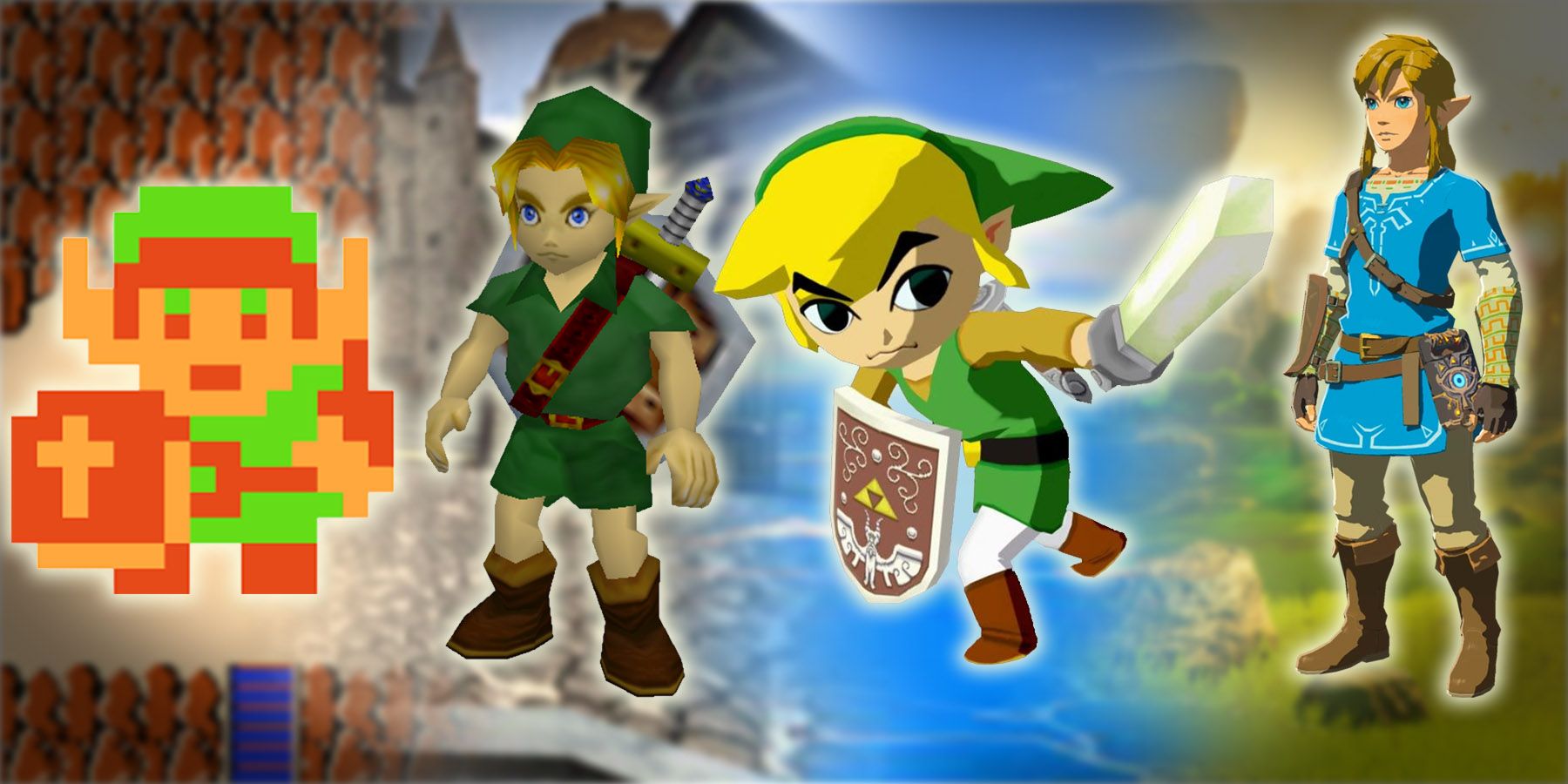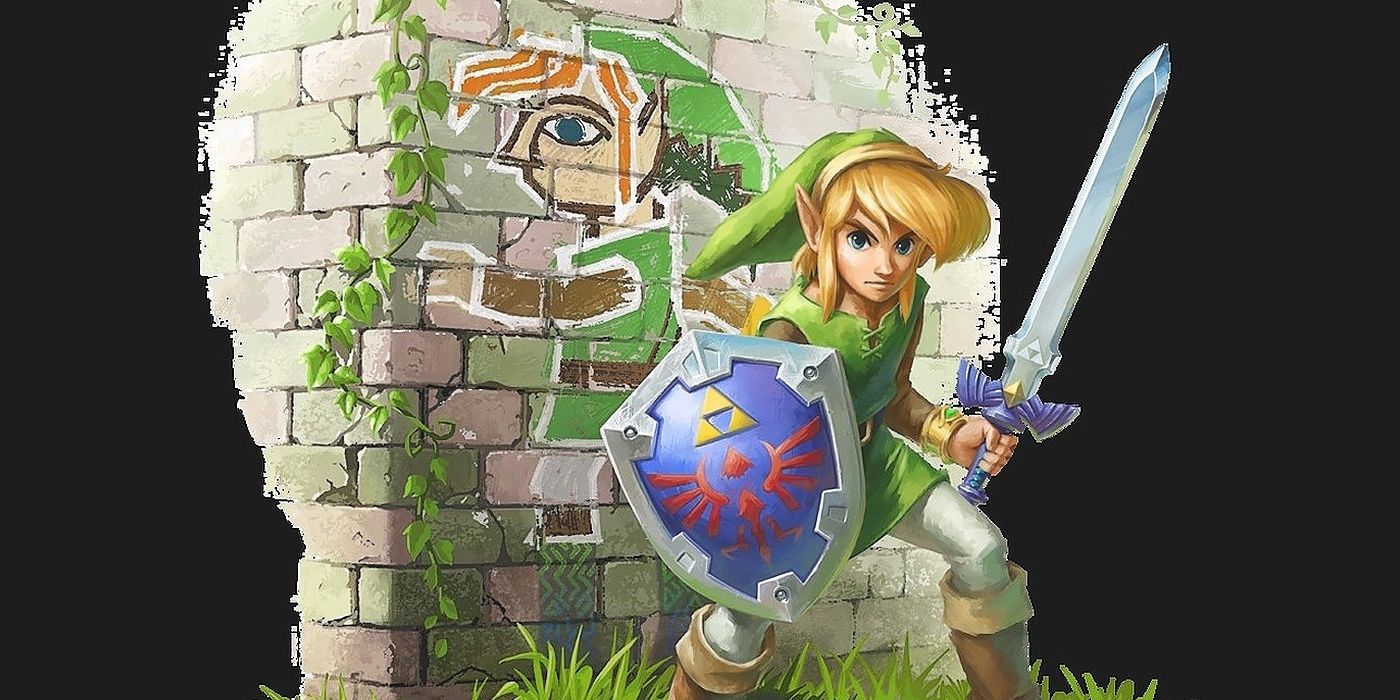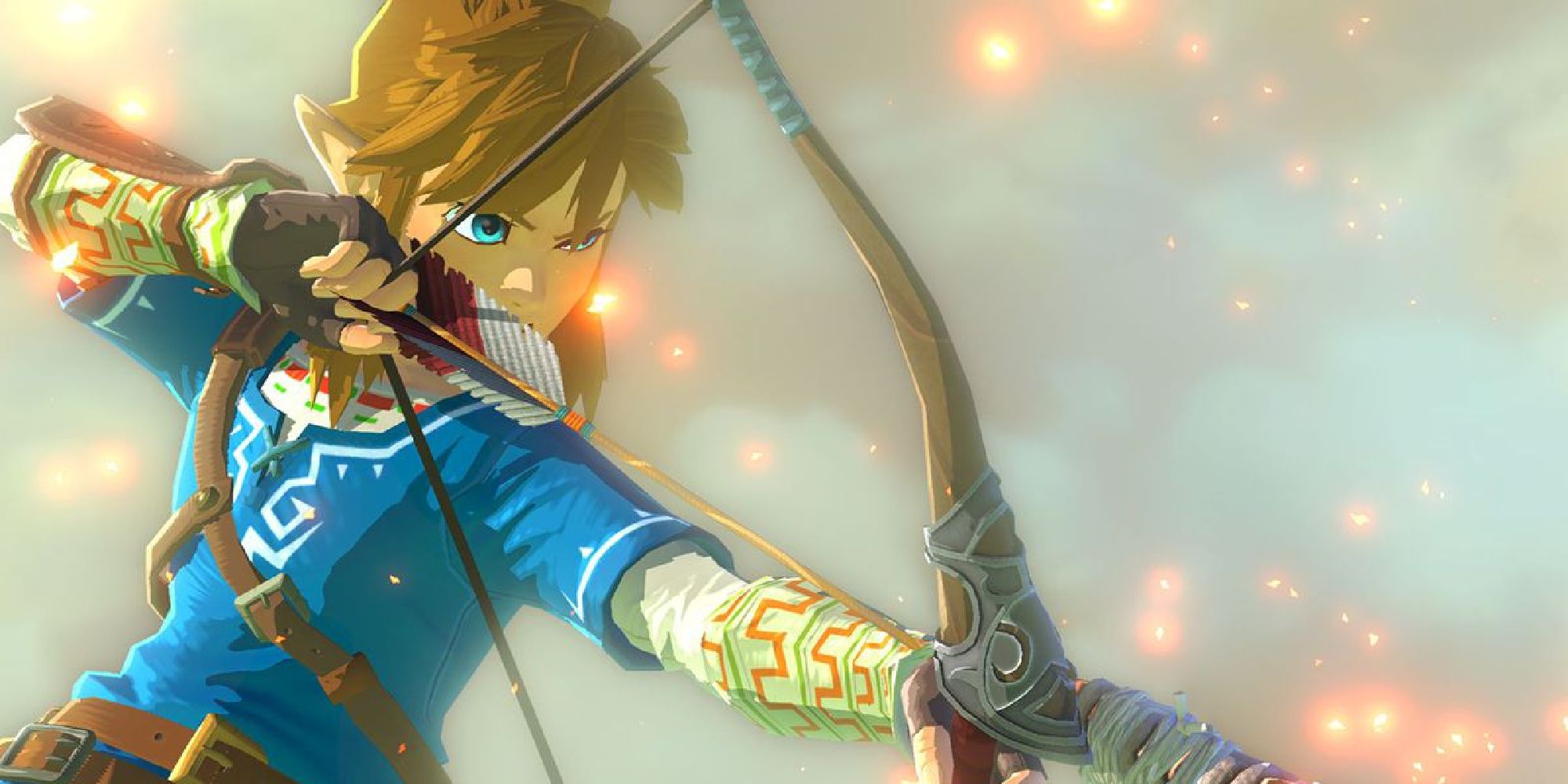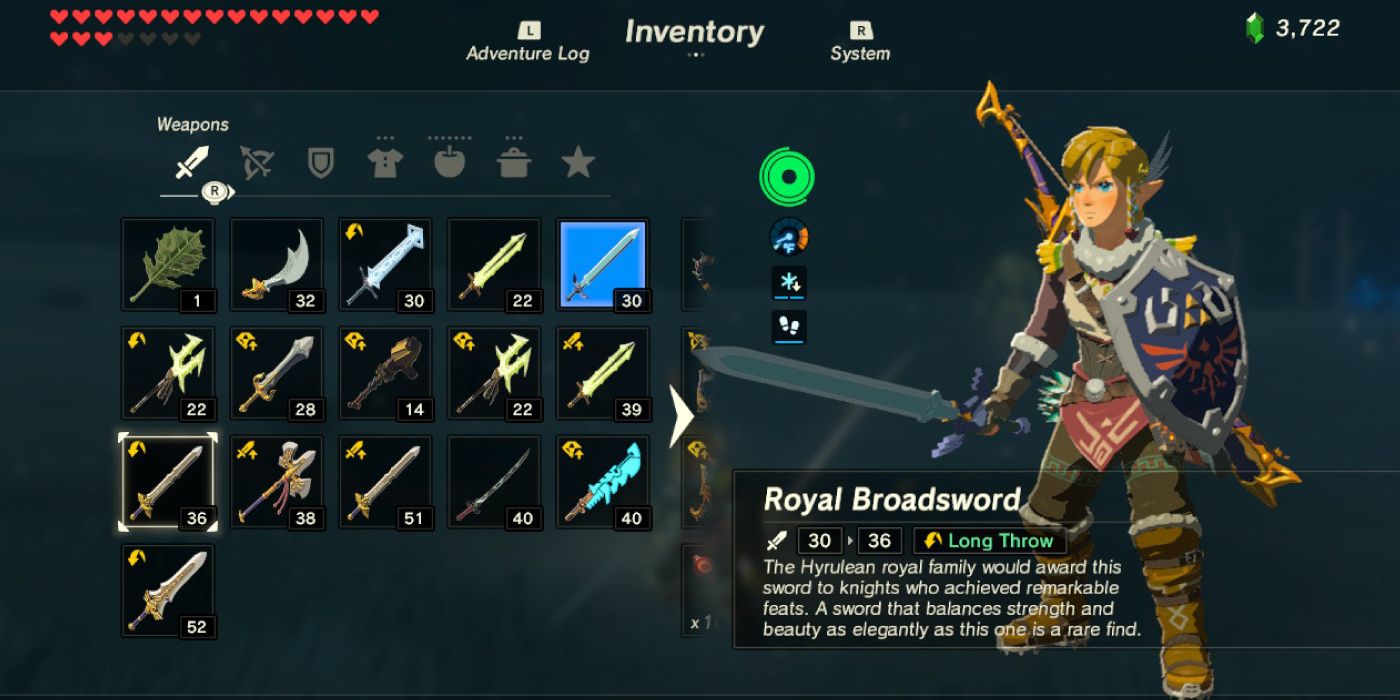The Legend of Zelda first released in 1986. The game was a simple, top-down adventure that set many staples for Legend of Zelda games today. Vast overworlds with themed regions, music tracks, enemy types, and recurring protagonist Link all first appear in the original Zelda game, and have consistently showed up since. That said, Link is not as simple a protagonist as he seems.
Link's design is instantly recognizable: a blonde boy with elf-like pointy ears and a green tunic. While the key facets of Link's design have remained consistent, he has gone through plenty of changes. Link gets more mechanically advanced with each and every game, culminating with Breath of the Wild 2's upcoming iteration of Link, which looks to be the most complex yet.
Link's Top-Down Evolution
The Legend of Zelda has always been a technically impressive series. No matter the era, each game has strived to innovate. The first Legend of Zelda, while simplistic by today's standards, was a marvel in 1986 thanks to using a game world unlike anything else at the time, and Link had multiple tools to aid in navigation beyond his sword, bow, and bombs.
This style of Zelda game carried on for a while with titles like A Link to the Past, The Minish Cap, and A Link Between Worlds, but each game puts its own technical spin on things. Link to the Past gave Link more movement options and allowed him to jump into a dark dimension. Minish Cap grants Link the ability to shrink down to explore new, tiny areas. Link Between Worlds expands on Link to the Past's world, but also gives Link the ability to merge into walls. Link's arsenal of moves and abilities also evolve with each game.
Link's Changes in 3D Titles
Just like how the original Legend of Zelda serves as the basis for every subsequent top-down entry, Ocarina of Time is the template for every 3D title. Ocarina of Time takes everything that works from the 2D Zelda titles and translates it seamlessly to 3D. The biggest change to Link is that he can change forms, swapping back-and-forth between a young and old version of himself throughout the game.
This form-changing mechanic is expanded upon in future Zelda games. The Legend of Zelda: Majora's Mask allows Link to don multiple masks to take the form of various species. Twilight Princess allows Link to turn into a wolf at will. That said, games like The Wind Waker - and its sequels Phantom Hourglass and Spirit Tracks - neglect form-change mechanics and simplify Link's moves, instead focusing on worldbuilding and exploration.
Breath of the Wild represents the largest change to Link in 3D. The game changes nearly every convention of traditional Zelda titles, introducing survival mechanics like crafting and a temperature gauge, exploration tools like climbing and a paraglider, as well an improved stamina meter from Skyward Sword that limits Link's actions. Link also gains access to new powers like Magnesis, which can manipulate metal objects; and Stasis, which can freeze objects in place. Breath of the Wild's sequel looks to expand on these powers further and give Link some new powers, like the ability to phase through objects.
Link's Appearance Over the Years
Link has gone through numerous technical changes throughout the years, but he has also received nearly as many physical updates. Link's pre-Ocarina of Time appearances are fairly consistent, barring A Link to the Past's iteration pink hair. This consistency was translated into the early 3D models utilized by Ocarina of Time and Majora's Mask. As these games represented Link's first jump into 3D, a major change to the character's appearance was not necessary.
After these titles came the GameCube era, in which a darker, more realistic Link was teased. Because of these teasers, Wind Waker's stylized, cartoonish graphics were controversial at the time. Then Twilight Princess fulfilled this promise, serving as the grittiest Zelda yet. Skyward Sword combines the realistic proportions of Twilight Princess with the eye-catching colors of Wind Waker, and Breath of the Wild adds to this with a particular aesthetic.
Breath of the Wild goes further than changing just Link's art style; it completely changes his default outfit. Gone are the traditional green shirt and hat, Link now dons a blue Champion's Tunic. Breath of the Wild also has many different armor sets, so players can customize Link's appearance however they see fit. Breath of the Wild's sequel looks to Link's base appearance further, equipping him with revealing, ripped clothing that showcases new tattoos.
The Legend of Zelda series has changed considerably since its inception in 1986. Link has become more advanced with each passing game, and his appearance has changed just as much. The upcoming sequel to Breath of the Wild looks like it will change Link even more in both of these regards. After Breath of the Wild 2 was delayed, it will be some time until players see this Link in action.

